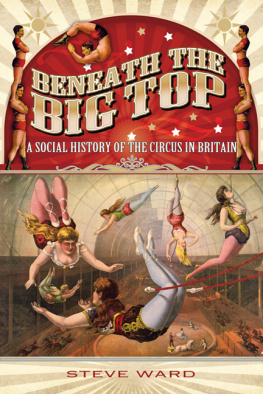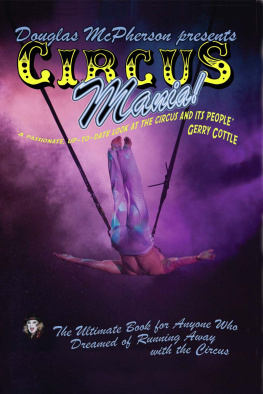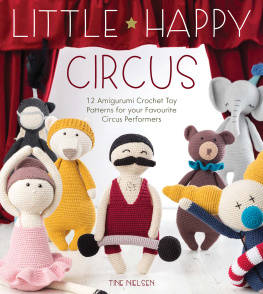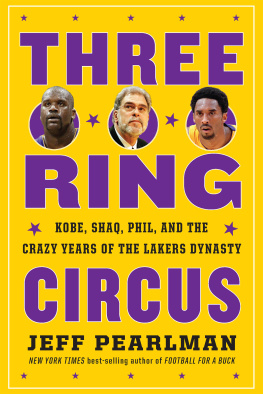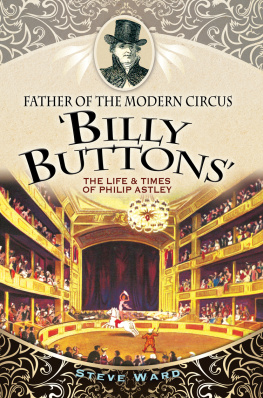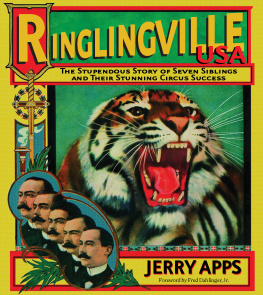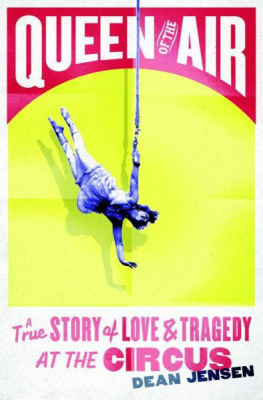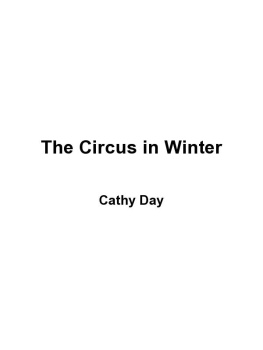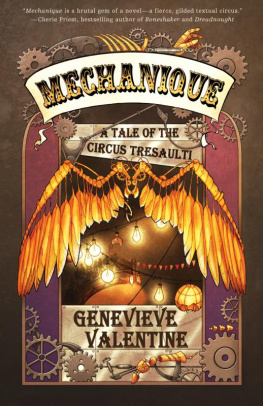This book is dedicated to all my grandchildren, so that they too may tell the magical story of the circus to their grandchildren in the future .

The author clowning around in the show Pellagrini . ( Photograph courtesy of Yvonne Notzon )
First published in Great Britain in 2014 by
Pen & Sword History
an imprint of
Pen & Sword Books Ltd
47 Church Street
Barnsley
South Yorkshire
S70 2AS
Copyright Steve Ward 2014
ISBN 978 1 78303 049 1
eISBN 9781473840867
The right of Steve Ward to be identified as the Author of this Work has been asserted by him in accordance with the Copyright, Designs and Patents Act 1988.
A CIP catalogue record for this book is available from the British Library
All rights reserved. No part of this book may be reproduced or transmitted in any form or by any means, electronic or mechanical including photocopying, recording or by any information storage and retrieval system, without permission from the Publisher in writing.
Typeset in Ehrhardt by
Mac Style Ltd, Bridlington, East Yorkshire
Printed and bound in the UK by CPI Group (UK) Ltd, Croydon, CRO 4YY
Pen & Sword Books Ltd incorporates the imprints of Pen & Sword Archaeology, Atlas, Aviation, Battleground, Discovery, Family History, History, Maritime, Military, Naval, Politics, Railways, Select, Transport, True Crime, and Fiction, Frontline Books, Leo Cooper, Praetorian Press, Seaforth Publishing and Wharncliffe.
For a complete list of Pen & Sword titles please contact
PEN & SWORD BOOKS LIMITED
47 Church Street, Barnsley, South Yorkshire, S70 2AS, England
E-mail: enquiries@pen-and-sword.co.uk
Website: www.pen-and-sword.co.uk
Contents
Acknowledgements
In compiling this book I have received help and support from many people. Although they are far too numerous to mention in full, I am grateful for the assistance they have given, but I would specifically like to thank the following:
The staff of the National Fairground Archive in Sheffield for their tireless help in my research; Jen Newby for her constant advice and support; Bob Bain of the Scottish Music Hall and Variety Theatre Society; Matt Buck of the Malt Cross Music Hall in Nottingham; Keith Wardell; T.W. Ward CNC Machinery Ltd Sheffield; David Jamieson of the Circus Friends Association; Kitty Ross, the Curator of Social History at Leeds Museums and Galleries Service; Edgar Pickles and the Kippax and District Historical Society; Jim Riley of Skylight Circus; Charlie Holland; Chuck Johnson of the American Youth Circus Organisation for their help and support; Martin Burton of Zippos Circus; Circus San Pedro Piccolino; Gerry Cottle; Norman Barrett, Arthur Pedlar and the Rapide Brothers for their hospitality, interviews and help; Mrs Erica Parnell, Simon West, and all other unsuspecting members of the public at Heathrow airport for their interviews and finally my wife Linda, who has become a circus widow throughout this project.
In memory of Mrs Erica Parnell, 19212013.
Foreword
Circus is good for you. It is the only spectacle I know that while you watch it gives the quality of a truly happy dream.
(Ernest Hemingway, The Circus, 1954)
I am a josser a person who was not born into the circus world, although a couple of my distant ancestors were comedy acrobats. My journey into the circus has been a roundabout one: through theatre, Commedia dell Arte , slapstick, clowning, performing, teaching and directing. Most of my circus work has been with young people, and the joy and wonder on their faces as they enter into the dream world of the circus has never ceased to amaze me.
This book reveals how that dream world evolved. It is a history book, yes, but not an academic catalogue of circuses and performers. You will not find your flying trapeze-artist uncle in here or the obscure circus in which he performed, unless by pure coincidence. Beneath the Big Top has been written for entertainment and instruction. Those of you who are circus fans will find something new in this book, I hope, some aspect of the circus you never knew about. For those with just a passing interest, I intend to open up the world of the circus as you have never imagined it, uncovering the triumphs and disasters, the trials and tribulations and the downright bizarre.
The writing of this book has been a fascinating journey. In my research, whether trawling through pages and pages of old newspapers and documents, listening to the stories of those who work in the circus or who fondly remember childhood visits to it, I have come to appreciate just how much it is part of our social history. It is a very British institution. I hope very much that as you dip into this book, you too will be drawn into the dream world of the circus.
Steve Ward
Leeds, 2014

Coco the Clown; my childhood hero. Image from an advertising leaflet given out to members of the public in the 1960s. (Authors collection)
Introduction
As a small child in the mid-1950s, I was taken to see the Bertram Mills Circus when it made its annual visit to Gloucester. It was the first time that I had ever visited a circus and we went as a whole family. My mother recalls that I was spellbound with the whole event, but what I remember most vividly is the damp, earthy smell inside the tent, the rough wooden seat, the music and the vibrant colours, especially Coco the Clowns crazy costume. To me as a small boy, he was a very tall, painted, ginger-haired monstrosity in a colourfully loud and baggy checked coat. He was terrifying and yet fascinating at the same time he scared me, yet he made me laugh and from the moment he pulled me out of the audience to take part in one of his tricks, I was hooked! Since that day I have had a life-long fascination with the circus.
So when some years ago my three-year-old granddaughter Chloe suddenly announced, Lets play circus, I was pleasantly surprised. For the next half an hour she became the clown with a funny walk, the high wire artiste balancing across an imaginary rope, and the juggler pretending to juggle three balls. Nothing unusual in that, you might think, but she had not yet visited a circus. So how did this three-year-old child have an understanding of what a circus is?
Circus seems to have permeated our culture since the development of its recognisable modern form in the late eighteenth century, through the father of the circus, Philip Astley and his trick riding. Circus imagery has appeared in many forms, some ephemeral, such as advertising.
In the example overleaf, a beautifully painted window display board from 1900 for Greensmiths Derby Dog Biscuits depicts a dog jumping through a paper hoop being held by a painted clown of the period, whilst another hidden clown tempts the dog with a Derby Dog Biscuit. Other forms of circus imagery are more lasting, and many well-known artists, such as Degas and Seurat, took their inspiration from the circus of their time.
Toulouse-Lautrec produced a remarkable series of 39 drawings entitled Au Cirque (At the Circus) , including a beautiful coloured crayon on paper sketch from 1899 of a wire walker, entitled Danseuse de cord ( High wire walker ). Lautrec has captured the moment of suspense as, gripping her seat with both hands, she stretches her right foot tentatively forward onto the wire before stepping out; one can feel the tension and drama of the scene.

